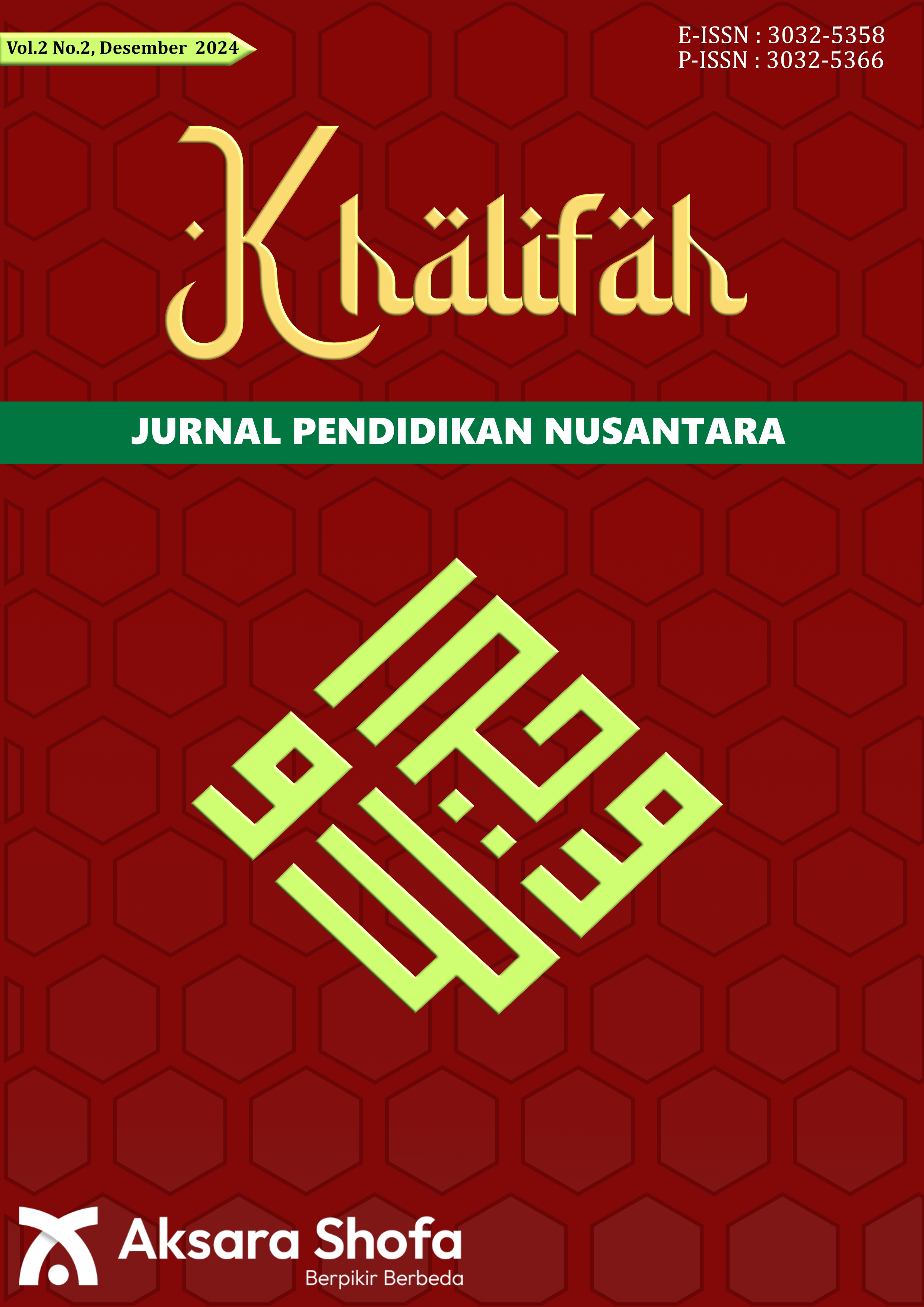Developing audio-visual materials to teach vocabulary to young learners
DOI:
https://doi.org/10.62523/khalifah.v2i2.63Keywords:
Audio visual materials, Language Learning, EFL Students, Interactive teaching, Language retentionAbstract
This study aims to create audio-visual resources to enhance vocabulary learning and comprehension among young English as a Foreign Language (EFL) students, with an emphasis on fruit-related vocabulary. Traditional teaching techniques, such as rote memorization, often fail to engage learners and do not encourage long-term retention. In contrast, audio-visual tools like videos, animations, and interactive features provide a more engaging, dynamic, and multimodal learning experience. Using a Research and Development (R&D) methodology, the research will involve needs analysis, material design, prototyping, classroom testing, and evaluation. The effectiveness of the materials will be measured through pre- and post-tests, surveys, and feedback from both students and teachers. This study aims to improve vocabulary retention and comprehension while examining young learners' views on using audio-visual materials in language learning.
Downloads
References
Arango, M. D., & Daza, E. (2020). Teaching English vocabulary to young learners using video-based materials. Language Teaching Research, 24(2), 227-244. https://doi.org/10.1177/1362168819877892
Chen, Q., Liu, S., Huang, K., Wang, X., Ma, X., Zhu, J., & Peng, Z. (2024). RetAssist: Facilitating vocabulary learners with generative images in story retelling practices. arXiv. https://arxiv.org/abs/2405.14794
Gu, Y., & Johnson, R. K. (2019). Using technology to support young learners' vocabulary acquisition. Journal of Educational Technology & Society, 22(1), 46-58. https://www.jstor.org/stable/26838473
Hsin, C. T., & Cigas, J. (2013). The effectiveness of using videos to teach vocabulary to young learners. Journal of Educational Research, 106(5), 373-383. https://doi.org/10.1080/00220671.2012.731537
Ibarra Mayorga, S. (2015). Effective methods to use audio-visual aids for vocabulary learning in first grade students. Universidad Nacional Autónoma de Nicaragua. https://repositorio.unan.edu.ni/id/eprint/11333/1/19875.pdf
Kim, Y. H. (2020). The role of multimedia in vocabulary acquisition for young learners. International Journal of English Education, 9(2), 45-56. https://doi.org/10.1007/s10944-020-00245-7
Kokku, R., Vempaty, A., Abuelsaad, T., Dey, P., Humphrey, T., Gibson, A., & Kotler, J. (2018). Design and evaluation of a tutor platform for personalized vocabulary learning. arXiv. https://arxiv.org/abs/1807.03224
Konomi, D. K. (2013). Using visual materials in teaching vocabulary in English as a foreign language classrooms with young learners. Pixel International Conference on Education and Learning, 3. https://conference.pixel-online.net/files/npse/ed0003/FP/0311-SERA209-FP-NPSE3.pdf
O'Connor, M. (2016). The role of multimedia in language teaching: Applications to teaching vocabulary. Journal of Language Teaching and Research, 7(4), 701-708. https://doi.org/10.17507/jltr.0704.12
Sarı, S. & Okan, Z. (2014). The impact of using video clips in vocabulary instruction. Language Learning Journal, 42(2), 157-171. https://doi.org/10.1080/09571736.2014.930742
Sung, Y. T., Chang, K. E., & Liu, T. C. (2016). The effects of integrating mobile devices with teaching and learning on students’ language performance: A meta-analysis. Computers & Education, 94, 252-273. https://doi.org/10.1016/j.compedu.2015.11.010
Teng, B. S., & Hsu, W. T. (2018). The effectiveness of using multimedia in teaching English vocabulary to young learners. Journal of Language Teaching and Research, 9(4), 808-817. https://doi.org/10.17507/jltr.0904.20
Weerasinghe, M., Biener, V., Grubert, J., Quigley, A. J., Toniolo, A., Pucihar, K. Č., & Kljun, M. (2022). VocabulARy: Learning vocabulary in AR supported by keyword visualisations. arXiv. https://arxiv.org/abs/2207.00896
Yang, Y., & Sun, M. (2017). Using audiovisual materials for vocabulary learning: A study with young learners. Educational Technology & Society, 20(3), 89-100. https://www.jstor.org/stable/26727691
Zoghi, M. (2018). Enhancing young learners’ vocabulary development through visual and audio materials. English Language Teaching, 11(6), 62-75. https://doi.org/10.5539/elt.v11n6p62
Downloads
Published
Issue
Section
License
Copyright (c) 2024 Muhammad Dicky Setiawan, Rizki ALfajri Firdaus

This work is licensed under a Creative Commons Attribution-ShareAlike 4.0 International License.



























